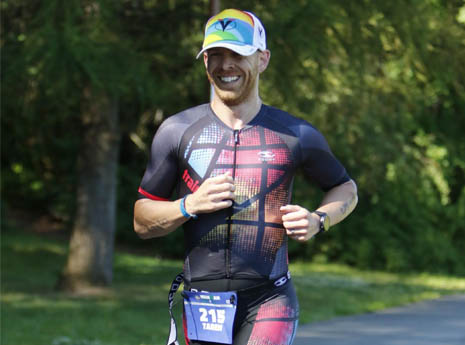As you start in the sport and move up in distance from sprint to Olympic and eventually to 70.3 and 140.6, one of the biggest challenges preventing you from having successful races fading toward the end of the bike leg. Not only does fading near the end of the bike result in a slower time, but it almost guarantees the run leg won't go well. Here are five ways triathletes of all levels—competing at any distance—can set themselves up to stay strong all the way to the end of the bike.
Over-Distance Workouts
To bike well at each distance of triathlon, you need to make the distance they have to cover in the race feel so small that it doesn't phase them. Triathletes can use over-distance workouts (building up to biking longer than the actual distance of the bike leg of the race) to build massive endurance. Here are the distances you should work toward based on the race you're training for:
- Sprint: 30 to 35 km
- Olympic: 60 km
- 70.3: 115 km
- IRONMAN: 5.5 hours
Strength Endurance Workouts
You also need to make sure your muscles don't break down under the stress of a hard race effort bike. One way you can make your muscles stronger and more resilient is with low-cadence strength endurance workouts.
Cadence is the revolutions per minute while cycling. Performance workouts where the cadence is anywhere from 50 to 75 revolutions per minute, as opposed to the more typical 85 to 95, places more tension on the muscles, which helps to develop strength.
Start during your base-building season by performing just one minute of low cadence cycling at a time at a very low effort level. As the season progresses, gradually increase the duration and intensity of low cadence workouts until you're at the point where you can perform a workout such as 8x8 minutes at a hard effort close to FTP with 70 to 75 rpm, or even 30 minutes straight at race effort with 60 to 70 rpm.
Max Speed and Strength Workouts
You should have at least one workout per week that is well above the effort level you'll do in a race; this is commonly known as the VO2 Max workout.
By training at high intensity for short intervals (anywhere from 15 seconds to eight minutes), you'll increase the amount of oxygen you can process each minute, and your race effort will feel easier.
Get Comfortable in the Aero Position
Many triathletes don't spend enough time training in the aero position, and because of the scrunched-up hip angle, they'll lose upwards of 10 to 15 percent of their power when they get into the aero position in a race.
You should have one workout each week that is designed to spend as much time in the aero position as possible. Typically, this workout is a weekend-long ride followed by a brick run.
If you don't feel comfortable in the aero position, first try getting a bike fit. Then once your bike is adjusted perfectly to your body, gradually build up from just one minute in the aerobars until you can spend an entire ride tucked in the position.
Dial in Your Nutrition
You need to make sure they're taking in adequate calories and fluids during the bike portion of a race; not doing so will leave you depleted, and you won't be able to perform well, no matter how fit you are.
To get started with your triathlon nutrition plan, check out this article for five nutrition tips for race day.
READ THIS NEXT: How to Run Faster Without It Feeling Harder


